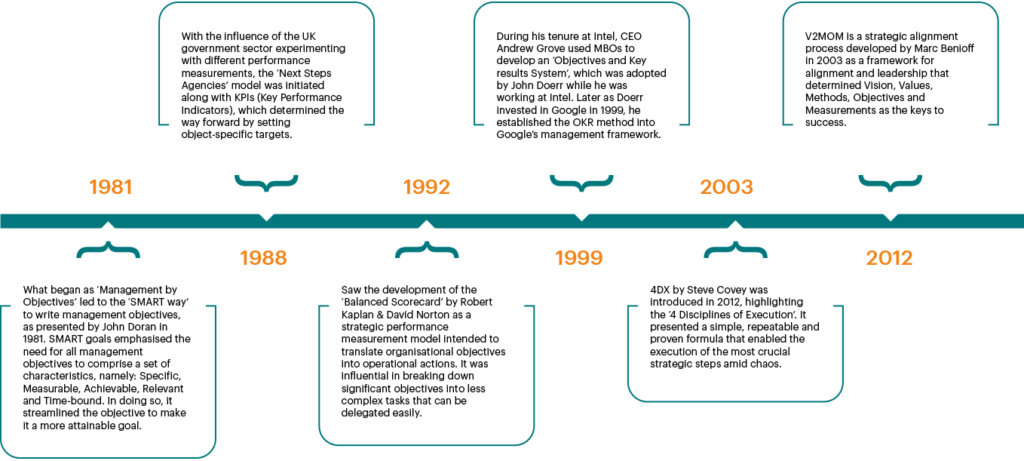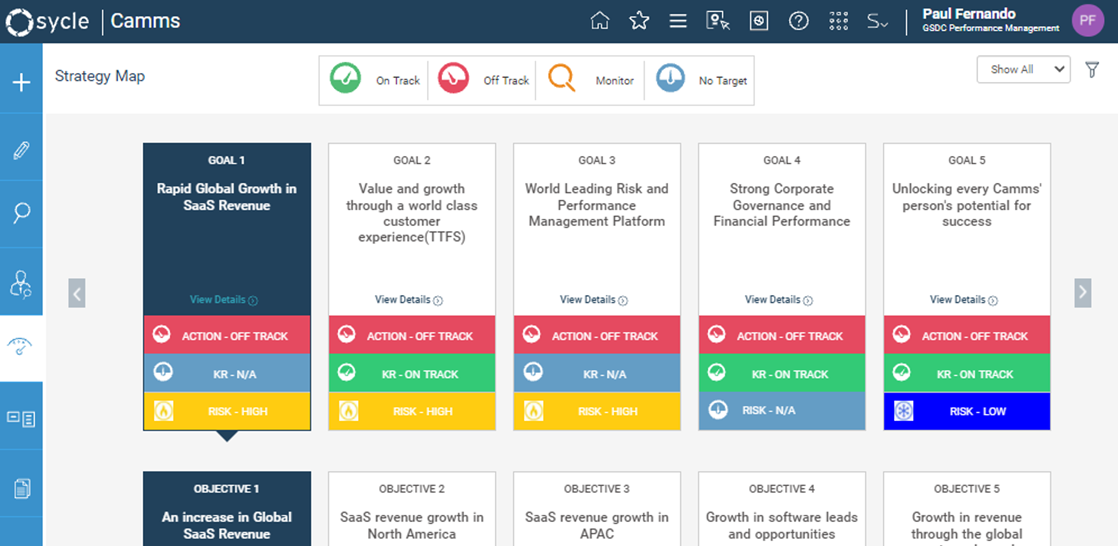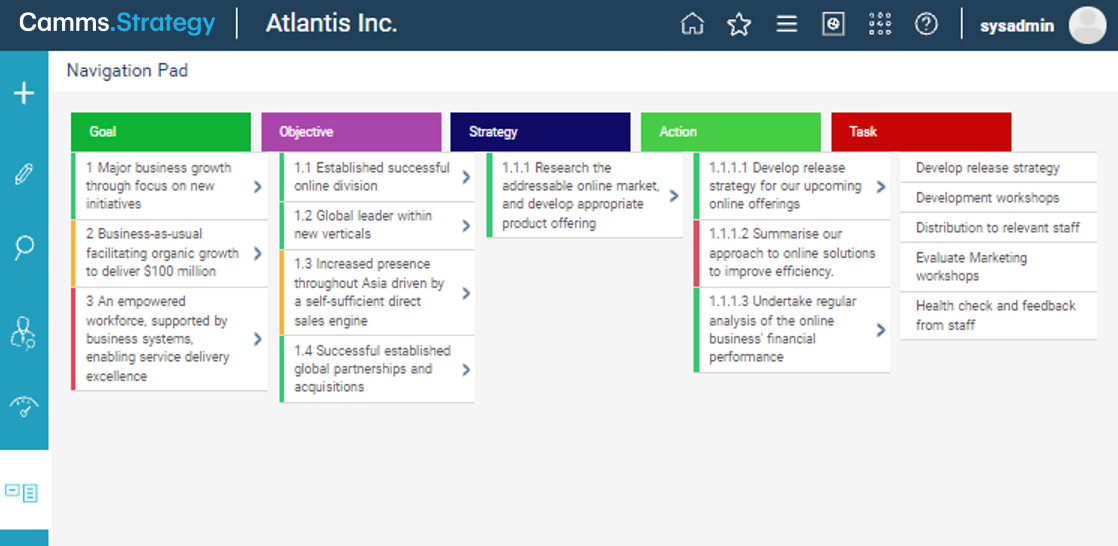You might have heard of the terms Objectives and Key Results (OKRs) and Key Performance Indicators (KPIs) before. But what has made it essential to organisational strategy, so much so that the corporate world is a buzz discovering its aptitude? Keep reading to find out.
A pro athlete training for a marathon keeps track of their daily performance throughout the process. From nutrition intake and muscle strengthening to speed and endurance, there are many factors that require individualised attention and tracking in order to perform well on the big day. How would they know if their training and conditioning are adequate if they do not record their daily or weekly performance?
This same logic can be applied to business and management. How would you know if your business is reaching its targets unless you track your progress regularly?
In this fast-paced, result-driven world, businesses of all sizes across numerous industries use frameworks to measure their progress, and the commonly used frameworks in the management space are OKRs and KPIs.
What Are OKRs?
Objectives and Key Results (OKRs) are becoming an increasingly popular management methodology for business teams. It’s been popularised by Google but is now being used by organisations outside of the search giant. OKRs have been shown to increase employee motivation and productivity, among other benefits.
The ‘Objectives’ component describes what an organisation intends to accomplish and acts as a starting point for team and goal management: what can you do today to get closer to that goal?
This is where Business Intelligence (BI) comes in handy as it combines business analytics, data mining, data visualisation, data tools, infrastructure, and best practices to help organisations make more data-driven decisions.
And ‘Key Results’ are key deliverables that will help determine the progress of the established objectives.
So how do OKRs differ from KPIs? Do we need both to track business progress? Are there alternatives to use? To break it down further, it helps to look at how OKR methodologies developed over the years and how they contribute to goal management.
The Evolution of Goal Management
The history of OKRs can be traced back to the term MBOs, otherwise known as ‘Management by Objectives’, which was introduced by Peter Drucker in his book, ‘The practice of management’ in 1954.
There are three main elements in Power BI including Desktop, Service and Mobile. Power BI Service is an online service hosted on Azure Cloud where you can access the capabilities of viewing, reporting and sharing your dashboard.
According to Drucker, MBOs used a set of standards for objectives to measure the performance of a company and its employees. It was used to identify problem areas within the organisation by comparing productivity levels against the set of predetermined standards, which are made aware to both managers and employees from the onset. Setting clear standards was influential in helping employees become aware of their role in the company and the ‘big picture’. It streamlined the processes to follow in order to reach set targets or objectives.
If the objectives are not met successfully, the standards of measures were utilised to identify the exact problem areas. Once identified, they would be used to determine the areas that require prioritisation and the steps necessary for improving efficiency within the organisation.
Since 1954, MBOs have evolved through many stages to become what we refer to today as OKRs.
Timeline of goal management framework evolution:

What’s the Difference between OKRs & KPIs?
Objectives and Key Results (OKRs) and Key Performance Indicators (KPI) are metrics used together to help achieve business or team performance goals. Often you will hear the terms ‘Objectives’ and ‘Key Results’ synonymously; however, while related, they play different roles in the process.
In essence, OKRs are goal-setting methods that use ‘Objectives’ and ‘Key Results’ that align with business goals that are measured to determine the business progress and trajectory.
With the ‘Objective’ setting the direction for the entire goal and the ‘Key Results’ breaking down specific deliverables for each objective, the concept can present multiple key results to measure the progress of each objective.
On the other hand, Key Performance Indicators can be used as a measure of performance and contribute to decision-making and resource allocation. They focus on specific aspects at varying levels of the organisation. They are used for managing performance by creating a network of measures to gauge the critical outputs of an organisation.
A successful system that manages performance and creates a network of measures enables performers at all levels to determine their impact on critical organisational outputs.
Here are some of the key similarities and differences between OKRs and KPIs:
- OKRs are explicitly linked to the strategic outcome of the objective, while KPIs link to the process or the system, which may or may not be strategically relevant.
- OKRs can use multiple key results within an objective to describe the cross-functional nature of work. At the same time, KPIs only have a single focus and do not reflect on the overall organisational goal.
- OKRs are designed to focus all activities of the organisation and its employees towards one common goal. In contrast, KPIs are designed to cover specific organisation metrics, regardless of their importance to its primary purpose.
- It is important to note that KPIs are not stand-alone features but are used within the OKR framework to set precise goals that are more aligned and better executed.
Now, let’s find out how you can put these concepts to work with a comprehensive, cloud-based solution.
How Can Camms.Strategy Benefit Your Organisation?
Overlooking contemporary business concepts associated with strategy can be a recipe for inevitable failure. With the watchwords for today’s volatile and uncertain environment being agility and nimbleness, its crucial to consider if your organisation is taking the right steps to bring strategic management aspects together to secure its short and long-term success.
With Camms.Strategy, you can develop and execute your strategy, measure ongoing business performance and ensure your team is working towards set goals. Our software gives you:
- Tools to plan and execute your strategy.
- Demonstrate how operational initiatives are contributing to high-level organisational objectives and measure their impacts through a sophisticated KPI engine.
- Keep the executive and board informed on strategic progress through insightful dashboards and reporting.
Here’s a snapshot of how this solution looks!
Click here to discover the capabilities of this cloud-based platform that has been built on two decades of experience in helping organisations plan and execute strategy. It is a comprehensive solution for strategic planning, execution, evaluation and reporting that allows individuals line of sight to see how every single action and task they do drives key organisational goals.
Already a Camms customer? If you’re curious to learn more about how Camms.Strategy can be leveraged to create strategic alignment in your organisation, get in touch with a Camms Consultant today. Our Subject Matter Experts have an in-depth knowledge of strategic business planning to help turn your strategy into reality!
















